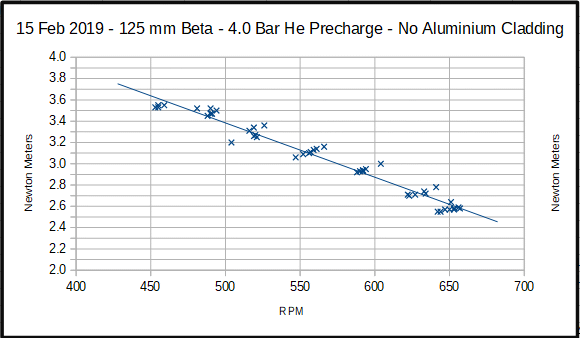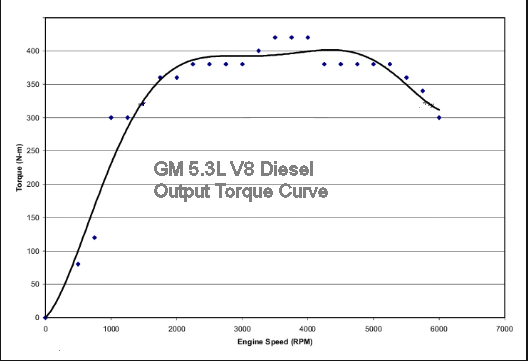Page 24 – Torque, RPM & Power Comparison
Torque
is the work done by a single revolution of the engine.
We
need to multiply it by the speed of the engine, the RPM, to
calculate the engine power.
Power
is the rate at which the engine can deliver work.
On previous pages, we have charted the power curve.
It is a very clear “hilltop” chart.
To get the most
power out of a Stirling we must load it so that its revs are at
the peak.
The
torque chart is very different. See opposite.
No
curve here – just a straight line. Downwards.
As
mentioned before, the reason is simple.
The amount of heat
energy that can be transferred into the gas per revolution, just
gets less
as
the engine runs faster.
This
is very different from the petrol and diesel 4 stroke engine.
For
each cycle of the IC engine, a fixed amount of fuel, and a fixed
amount of oxygen
enters
the cylinder. And each explosion produces a fixed amount of
energy.
The
faster the engine can be made to run, the more the power that can
be generated.
More
revs equals more power.
It's
almost the opposite with the Stirling.
But we can use the Stirling straight line torque chart to calculate the two
values we want.
The
peak power value at the top of the power curve – and the rpm
rate that generates it.
Then
we can set the gearing for the engine so that the engine delivers
the maximum power.

